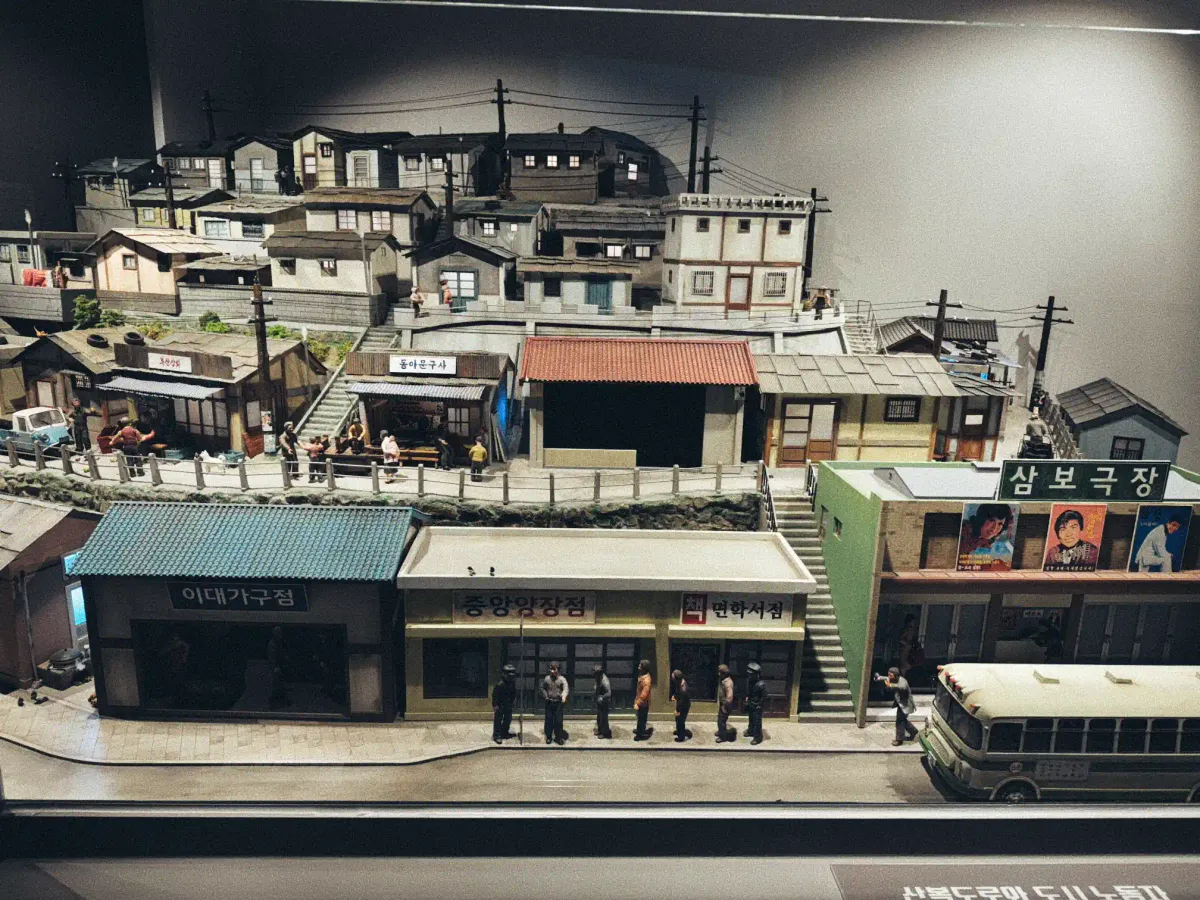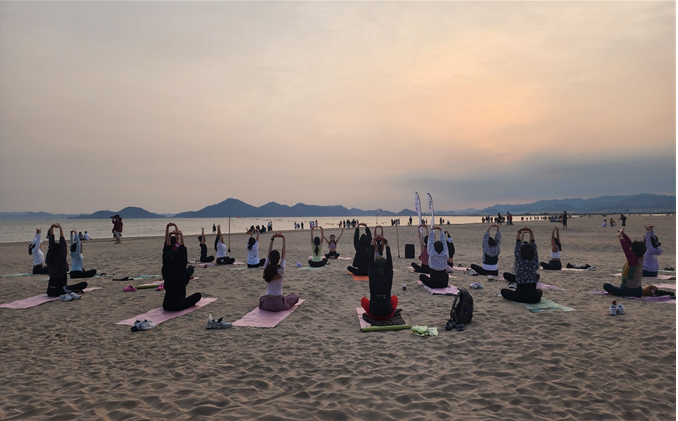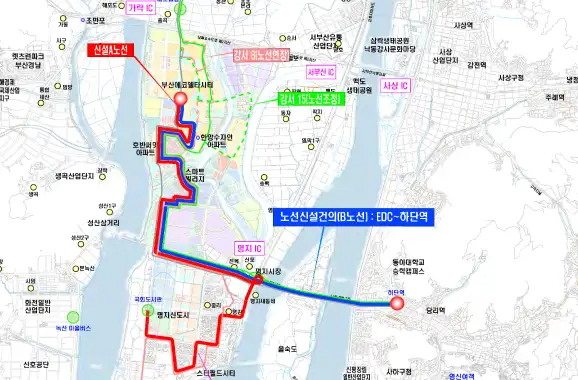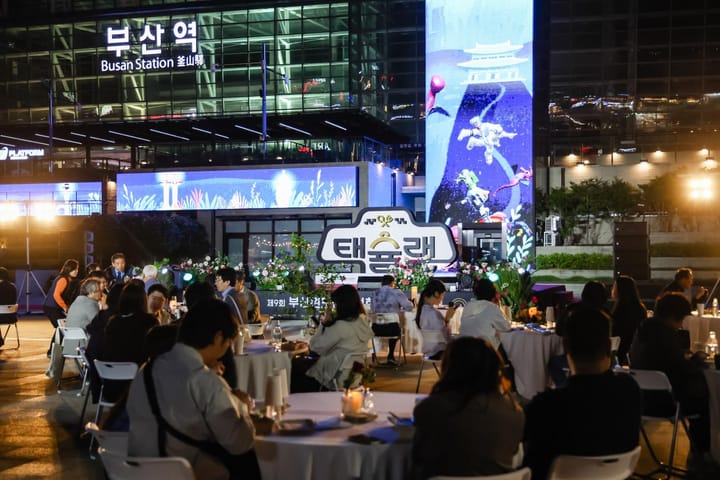Busan on the Ridge: Memory, Movement, and the Future of Sanbokdoro
Busan’s hilltop communities are finding new life through art, walking tours, and memory. But can they resist the rising pressure of high-rise redevelopment?

BUSAN, South Korea — From the slopes of Sujeongsan Mountain, the city lies below like a half-forgotten memory. The sea shimmers at its edge, pale and constant, while cranes and container ships idle like punctuation marks in the harbor. Up here, the air tastes of brine and iron. Wind moves slowly between rooftops, through stairwells and shuttered windows, and somewhere—out of sight—a kettle whistles in an old kitchen.
These roads do not rush. They twist and pause, like the breath of a city remembering itself. The Sanbokdoro, or “mountain waist roads,” are not the roads of postcards or urban spectacle. They were carved by necessity—by the weight of war, by the urgency of shelter, by the quiet will to endure. Generations built homes along these hillsides not for the view, but for survival.
And yet, the view remains. And it is from here, from these narrow roads and stone steps, that Busan reveals a different kind of beauty—one stitched together by time, by struggle, by the stubborn poetry of place.
Now, as the city returns its gaze to these ridgelines with new projects and old questions, the Sanbokdoro become something more than remnants. They are where memory walks, where policy hesitates, where future and past negotiate their next shape.
The hills of Busan have always held the weight of stories. In the aftermath of the Korean War, when tens of thousands fled south in search of safety, the city—hemmed in by mountains and sea—grew upward, not in buildings, but in makeshift stairways and slanted rooftops. Where flat land ended, life climbed.
Families settled wherever stone could bear wood. Rain barrels lined narrow alleys, children studied by candlelight, and steep staircases became school routes and shopping streets. What began as emergency shelter slowly hardened into neighborhoods—labyrinths of memory layered over topography.
The Sanbokdoro roads were born out of this improvisation. Tracing the contours of the ridge like a belt of breath between city and sky, they connected the disconnected: one hillside to another, one community to the next. Over decades, they became veins of resilience, lifelines for those who had little else.
But time, like gravity, pulls. The old neighborhoods aged faster than the city below. What once thrived with noise and neighbors grew quiet. Rust claimed fences. Families moved on. Yet not everything faded. The view—the harbor reaching into the haze—still holds something sacred, something worth pausing for.
Today, the Sanbokdoro remains a record not only of hardship, but of adaptation. They are monuments not made of marble, but of laundry lines, corrugated iron, and stubborn roots. And in these hills, where every slope tells a story, Busan begins to remember not just where it came from, but who it once was.
In May, the city extends an invitation—not just to observe history, but to walk inside it.
The Busan Modern and Contemporary History Museum, perched not far from the very ridgelines that shaped the city’s postwar soul, is offering a program simply titled Busan Walk. But this is no ordinary stroll. It is a guided return to the lived past, to the streets that once cradled the nation’s upheaval and quiet resolve.
Participants begin at the Sanbokdoro Exhibition Hall, where archival photographs and oral histories map the ascent of survival. Then the tour steps outside, into the present. Up narrow lanes, past the 168 Steps worn smooth by decades of feet, beside aging apartment blocks like the Hwashin Complex—each stop a footnote in the city’s long autobiography.
There are no neon signs here, no commercial polish. But there is story, and there is sky.
Each walker is given an analog film camera—nothing digital, nothing immediate. The images they capture won’t be posted in real time, but developed, curated, and displayed in an exhibition that will sit beside the work of Yoon Chang-soo, this year’s recipient of the Onbit Documentary Photography Award. His images, shot over years, render the Sanbokdoro not as ruins, but as rooms still occupied by breath and memory.
Through this pairing—citizen image beside artist lens—the hills become not just a backdrop for nostalgia, but a living archive. Every shutter click becomes a gesture of attention. Every angle, an act of preservation. And every footstep says: we are still here.
For those who cannot climb, there is still a way to rise.
Bus No. 86, known locally as the Sanbokdoro bus, coils its way through the mountainside neighborhoods like a quiet archivist, stopping not at landmarks but at lives. Its route isn’t direct—it wavers, it waits. It creaks through alley-width lanes, brushes past rooftops, pauses for elders balancing market bags and schoolchildren pressing fingers to fogged windows. It is not a commuter’s bus. It is a storyteller.
Each bend reveals a new scene: a rusted mailbox nestled under a rain-stained wall, a woman hanging seaweed to dry on a balcony, a view of the harbor so sudden and so wide it makes conversation stop. For many, the 86 is routine. For others, it is revelation—a chance to move through a city that is usually only seen from below.
Here, in this slow journey, Busan folds into itself. Past and present sit side by side in worn seats. The road undulates like a long breath. No guide is needed. The ride itself is the narrative.
If walking the Sanbokdoro is a ritual of presence, riding the 86 is a ritual of return. Every stop carries memory. Every acceleration holds an echo.
Down the slope, in the museum’s annex, the past finds its voice not only in stories, but in sound.
On May 17, the building fills with the soft hush of people gathering—not to witness spectacle, but to listen. In a space once used for civil meetings and wartime planning, a new kind of dialogue begins: a talk concert titled Mangyang-ro: Layers of Time, led by documentary photographer Yoon Chang-soo. His images, taken across seasons and years, reveal the Sanbokdoro not through nostalgia, but with care—frames that hold not just decline, but dignity.
They show what remains: a child's toy on a windowsill, a woman sweeping steps, the same harbor horizon seen from different lifetimes. In his words, the hills are not disappearing—they are speaking, if only we still listen.
A week later, the same room welcomes children and families for something gentler, but no less resonant: a classical music performance drawn from Korean folktales. The Woodcutter and the Fairy, Heungbu and Nolbu, and other ancestral fables are reimagined as chamber compositions—familiar stories spun into melody. The notes rise through the rafters like echoes reawakening a quiet space.
This is not nostalgia. It is regeneration. Not through erasure, but through layering—of music on story, of image on memory, of footstep on path.
Here, culture does not decorate the neighborhood. It restores it. Piece by piece, voice by voice, frame by frame.
But as memory reawakens on the slopes, so does appetite.
In recent months, city officials and developers have quietly opened discussions to lift the height restrictions that have long protected the Sanbokdoro skyline. The proposal—couched in the language of revitalization—would pave the way for high-rise apartments along the very ridgelines that once bore the weight of war and migration.
Supporters speak of modernization, of solving housing shortages, of reconnecting the hills with the city's economic core. But the cost, critics argue, would be more than architectural. It would be visual. Cultural. Emotional. Perhaps even irreversible.
What is at stake is not just a view, but a vantage. The hills are one of the last places where Busan’s past still shares space with its present—not in plaques, but in people. Not in museums, but in windowsill plants, rooftop chickens, handwritten signs.
To replace this with glass towers would be to forget the very reason the city now returns to these roads with cameras, concerts, and care. What drew the museum, the artists, the walkers, the buses, was not a blank slate. It was texture. Time. The curve of a street not made for cars.
There are other possibilities. Urban designers speak of modular housing, small-lot redevelopment, live-work studios for young residents and artisans. There are models in Seoul, in Fukuoka, in Barcelona—cities that have chosen to infill rather than overwrite, to layer rather than level.
Because urban beauty is not measured in stories high, but in stories held. And when Sanbokdoro offers a view of the harbor, it should not be behind a tinted balcony window. It should be shared—by everyone who climbed those steps, and everyone who still might.
In Busan, the Sanbokdoro rises not only through topography, but through meaning. It is a geography of memory—one that speaks through weathered walls and half-finished staircases, through the curve of an alleyway where a grandmother still calls out to a neighbor, through the hiss of bus brakes beside a painted stone wall.
What the museum has begun—through walks, music, images, and small acts of presence—is not just a program. It is a proposal. A suggestion that the city’s past is not a weight to overcome, but a foundation to build upon. That renewal need not mean removal. That space can evolve without forgetting who once lived in it—and how.
The question now is not whether Sanbokdoro will change. It will. The question is what kind of change will allow people not just to stay, but to return. To thrive. To stand at the hill’s crest and look out—not with nostalgia, but with belonging.
Because cities are not made of concrete alone. They are made of steps. Of views. Of voices. Of the choice, again and again, to remember.



Comments ()